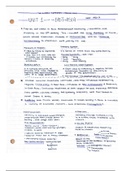2.
How are Chinese cultural traditions similar and how are they different and how did these traditions affect East Asia over time?
Réponse: Three schools of thought developed: Legalism, Daoism, Confucianism. They are similar because they reinforce the patriarchy and give people a moral and ethical code to live by. Filial Piety is one important cultural tradition. They are different because Legalism seeks to maintain harmony through strict laws, Daoism seeks too maintain harmony through humans living in a simple state of balance with nature and Confucianists believe that harmony is only achieved when everyone knows their place in society. These schools of thought led to traditions such as foot binding, and political and economic systems based on high ranking government officials and low status merchants, while peasants carried the economy through artisan labor.




